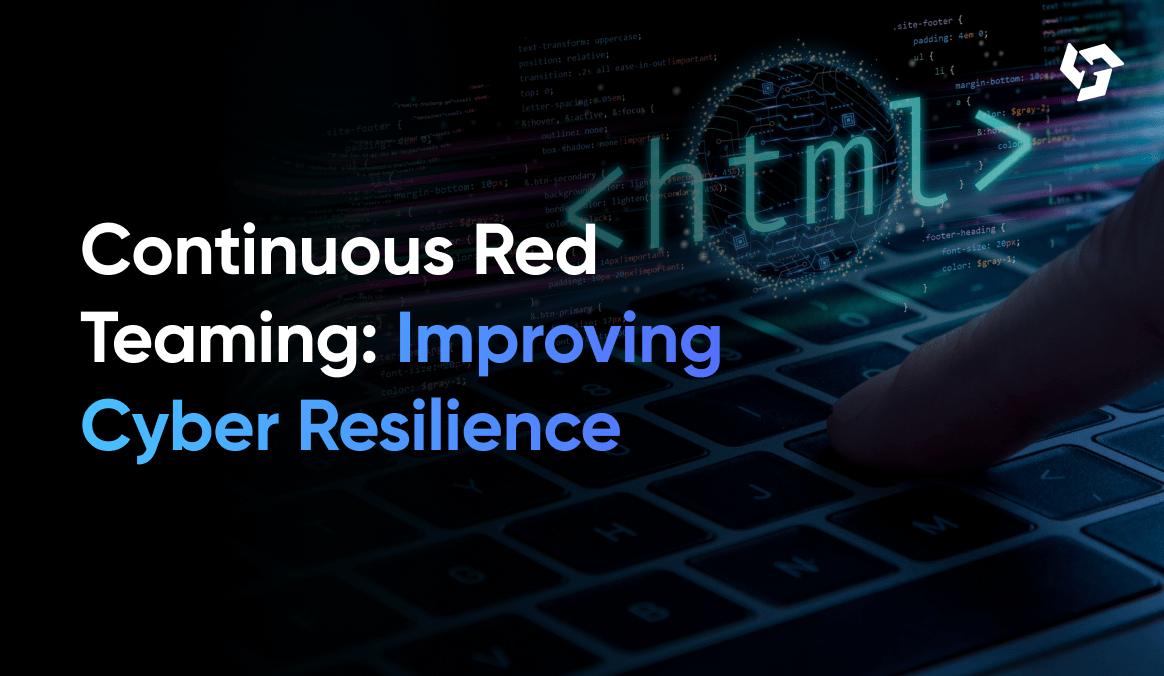As always said Cyber security is not a one time thing but a continuous process, with everyday enhancements. The traditional approach of annual or periodic penetration testing is no longer sufficient to defend against the relentless onslaught of cyber threats. Instead, many forward-thinking organizations are turning to Continuous Red Teaming to bolster their cyber resilience.
What is Continuous Red Teaming?
Continuous Red Teaming is a cybersecurity practice that takes the principles of traditional red teaming and applies them in an ongoing, iterative manner. Red teaming involves simulating real-world cyberattacks to identify vulnerabilities and weaknesses in an organization’s security infrastructure.
In the continuous variant, this process doesn’t stop after a single assessment; rather, it becomes an integral part of an organization’s.
So what do you require for Continuous Red Teaming?
Here are some requirements, you might be needing for Continuous Red Teaming:
- Frequent Assessments: Unlike traditional red teaming, which may occur once a year or less, continuous red teaming involves regular, ongoing assessments. These can be weekly, monthly, or at any other interval that suits the organization’s needs.
- Adaptive Tactics: Continuous red teams adapt their tactics, techniques, and procedures (TTPs) based on emerging threats and vulnerabilities. This ensures that the organization is always prepared for the latest attack vectors.
- Integration with Incident Response: Continuous red teaming integrates seamlessly with an organization’s incident response plan. It helps organizations practice their response to incidents in a controlled environment, leading to more efficient incident handling when real threats arise.
- Collaboration: Continuous red teams work closely with blue teams (defenders) to foster collaboration. This collaboration leads to a more holistic understanding of an organization’s security posture and helps bridge the gap between offensive and defensive security efforts.
Benefits of Continuous Red Teaming:
- Realistic Threat Assessment: Continuous red teaming provides a more accurate reflection of an organization’s security posture by simulating real-world threats and evolving attack tactics.
- Proactive Defense: Regular assessments enable organizations to proactively identify and remediate vulnerabilities before they are exploited by malicious actors.
- Enhanced Incident Response: By simulating attacks continuously, organizations can fine-tune their incident response processes, reducing downtime and minimizing damage during actual incidents.
- Compliance and Reporting: Continuous red teaming helps organizations meet regulatory requirements by demonstrating an ongoing commitment to cybersecurity and risk management.
- Security Culture: It fosters a culture of cybersecurity awareness throughout the organization, ensuring that everyone from employees to executives understands the importance of security.
Challenges of Continuous Red Teaming:
- Resource Intensive: Maintaining a continuous red teaming program can be resource-intensive, requiring skilled personnel, time, and technology investments.
- Balancing Act: Finding the right balance between red and blue teams, ensuring they collaborate effectively without conflicts, can be challenging.
- Data Sensitivity: Handling sensitive data during red team exercises requires careful planning and ethical considerations.
But fortunately you don’t have to face these challenges with Appsecure’s Red Teaming!
Continuous Red Teaming is a proactive, adaptive, and collaborative approach to cybersecurity that helps organizations stay ahead of evolving cyber threats. By integrating ongoing assessments into their cybersecurity strategy, organizations can enhance their cyber resilience, reduce the risk of data breaches, and better protect their digital assets in today’s ever-changing threat landscape. It’s a critical step towards building a robust defense against the cyber adversaries of tomorrow.



